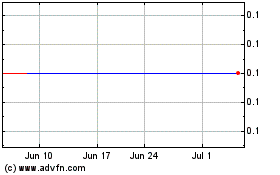By Soma Biswas
Suppliers that stocked the shelves during Sears Holdings Corp.'s
bankruptcy are being forced to swallow losses and some employees
won't get severance they are owed, even as law firms are guaranteed
full payment for their work on the retailer's chapter 11 case.
A year after the storied retailer sold its best stores and
assets to ESL Investments Inc., the investment firm owned by former
Sears Chief Executive Edward Lampert, the shell left behind in
bankruptcy is struggling to pay its debts after racking up more
than $200 million in bills from lawyers and advisers.
White-shoe law firms Akin Gump Strauss Hauer & Feld LLP,
which represents unsecured creditors, and Paul, Weiss, Rifkind,
Wharton & Garrison LLP, which represents the independent
committee of Sears's board, have earned more than $50 million. Akin
Gump has access to another $25 million set aside to cover the cost
of pursuing a speculative lawsuit against Mr. Lampert, which is
billed as a way to return more money to Sears creditors.
U.S. Bankruptcy Judge Robert Drain, who approved Sears's
liquidation plan last year, pushed vendors to settle for a maximum
of 33 cents on the dollar, with the potential to recoup more if a
potential lawsuit against Mr. Lampert yields more money.
"That created a tug of war between professionals on the one hand
and vendors on the other," said Kenneth Rosen of Lowenstein Sandler
LLP, a bankruptcy lawyer who represented some Sears vendors.
Big fees and low recoveries for creditors are common in chapter
11. But Sears is an extreme example of disparity between what was
paid to lawyers and advisers, who by law are required to be paid in
full, and what creditors got, bankruptcy lawyers and others
say.
Large chapter 11 cases are big business for law firms and
financial advisers, and it isn't unusual for them to make millions
on big cases. California utility PG&E Corp., which filed for
bankruptcy a year ago facing billions of dollars in payments to
victims of wildfires, had spent $191 million in legal and
professional fees through September, according to the company's
latest earnings report. Toys 'R' Us Inc. paid about $220 million to
lawyers and advisers through the course of its bankruptcy and
liquidation, court records show.
Sears filed for bankruptcy in October 2018 after more than a
century in business. Mr. Lampert bought the retailer's best assets
for $5.2 billion last winter, leaving the remains of the business
behind in bankruptcy. By the summer, the shell of the old Sears was
running low on cash as it faced unpaid bills from vendors and
suppliers that piled up during its chapter 11 case.
Meanwhile, the army of lawyers, advisers and investment bankers
continued to bill the estate.
Of the more than $200 million in fees and expenses already
billed by restructuring professionals, Weil, Gotshal & Manges
LLP, Sears's main bankruptcy law firm where top partners charge
$1,695 an hour, billed the estate more than $65 million through
October. Paul Weiss, where top restructuring lawyers charge $1,560
an hour, billed Sears more than $20 million through October.
Lawyers at Akin Gump and Paul Weiss didn't return calls. A
lawyer at Weil Gotshal, a spokesman for ESL and Judge Drain
declined to comment.
Since companies are required to pay certain parties in full
before closing a bankruptcy case -- such as vendors that supply a
retailer through a bankruptcy -- Judge Drain, in an unusual move,
has kept Sears's bankruptcy open indefinitely, even after he signed
off on a restructuring plan that blocks further creditor challenges
in bankruptcy court.
Sears needs to secure additional funds to pay top-ranking
creditors before the bankruptcy case can be closed. Akin Gump, the
creditors' law firm, has sued ESL alleging that Mr. Lampert's hedge
fund cheated Sears out of billions of dollars in a series of deals,
including the spinoff of real estate to Seritage Growth Properties
and of Lands' End and Sears Canada to ESL.
ESL and Mr. Lampert have denied any allegations that they looted
Sears.
If they succeed in securing the additional funds, it would go
toward paying vendors and others who are supposed to get full
payment at the end of a case and lower-ranking unsecured
creditors.
That lawsuit could take two to four years, Judge Drain said in
court in October.
In October, half of the $50 million left in the Sears estate for
creditors was earmarked to cover Akin Gump's fees and other costs
as it pursued the ESL lawsuit. Vendors and creditors got a total of
$21 million from that pot in December.
"How you define success [in a bankruptcy case] is different for
different people...But the question in Sears is whether a case
where there's a very small or minuscule return for creditors and
there's no real ongoing entity can be perceived as a failure," said
Jay Indyke, a bankruptcy lawyer at Cooley LLC, who wasn't involved
in the Sears case.
ESL has closed most of the Sears stores it bought last year. If
Sears had been liquidated instead of selling more than 400 stores
and key brands to the hedge fund, some creditors' lawyers say much
of the lawyer and adviser fees would have been avoided as a
government-appointed trustee would have taken over the job of
divvying up Sears's assets.
Write to Soma Biswas at soma.biswas@wsj.com
(END) Dow Jones Newswires
January 16, 2020 05:44 ET (10:44 GMT)
Copyright (c) 2020 Dow Jones & Company, Inc.
Sears (CE) (USOTC:SHLDQ)
Historical Stock Chart
From Mar 2024 to Apr 2024

Sears (CE) (USOTC:SHLDQ)
Historical Stock Chart
From Apr 2023 to Apr 2024
